Teacher Guide: Phonics and Word Work Resources
As a teacher, you know that a child’s understanding of how words work directly affects their ability to decode and comprehend text.
That means that it’s important to provide readers with lots of opportunities to engage with words. Although students get plenty of exposure to words throughout the day, spending focused time building their understanding of how words work can lead to higher levels of reading success.
That means that it’s important to provide readers with lots of opportunities to engage with words. Although students get plenty of exposure to words throughout the day, spending focused time building their understanding of how words work can lead to higher levels of reading success.
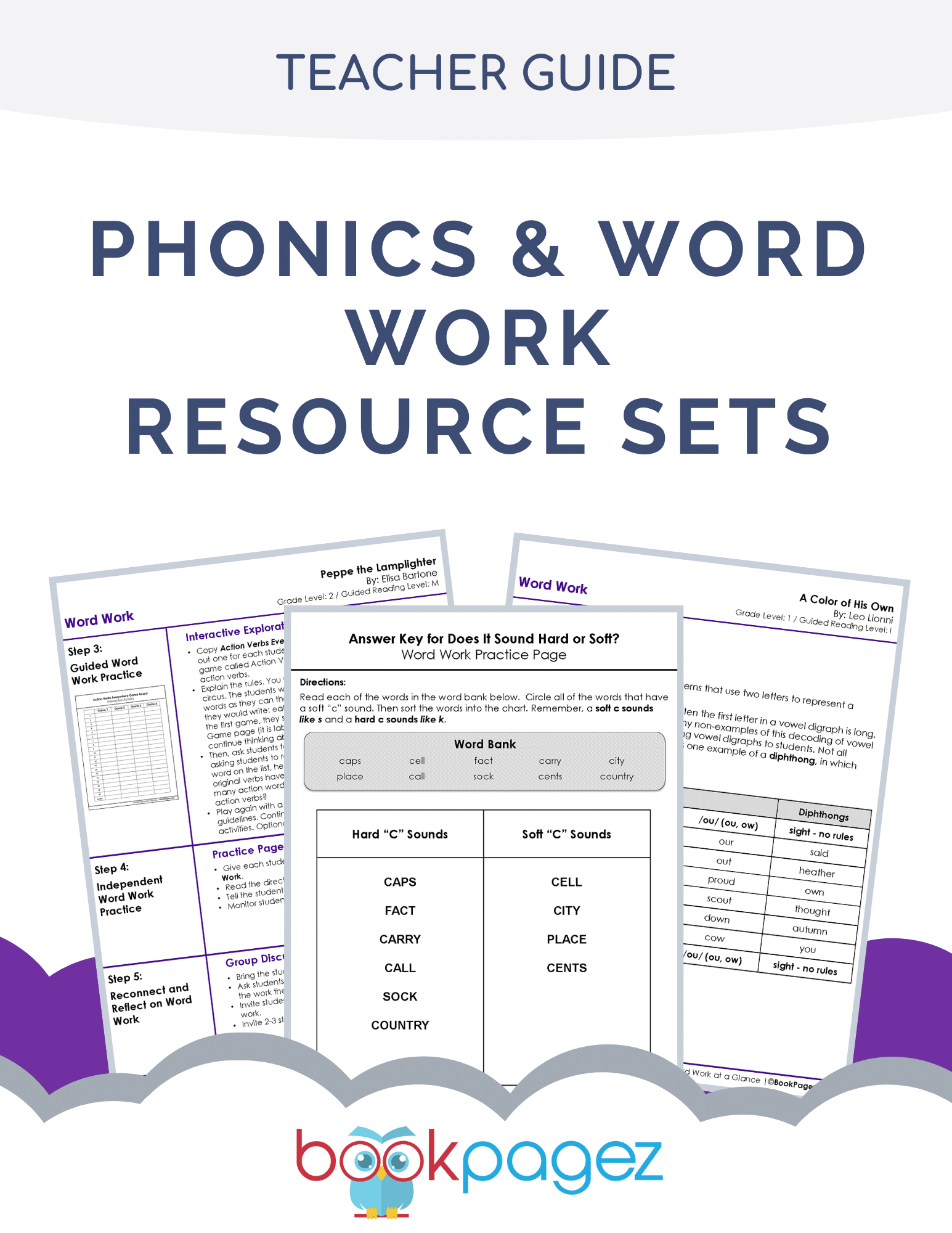
Table Of Contents
Overview of the Phonics and Word Work Resource Sets
The BookPagez Phonics and Word Work Lesson Plans support student exploration of the following systems of the English language:
The Word Work Lesson Plans include the following:
- Alphabetic systems
- Patterning systems
- Meaning systems
The Word Work Lesson Plans include the following:
- Step by step lesson plan
- Interactive activity
- Student practice page and answer key
- Extension activity
- Common Core State Standard and TEKS alignment
Video Walkthrough
Phonics and Word Work Lesson Plans: A Step by Step Guide
Every phonics and word work lesson plan was designed to support a variety of instructional approaches. The resource sets are flexible enough to be used for whole-group, small-group, or one-on-one instruction.
Each lesson plan consists of 6 parts:
PART 1: Introducing the instructional focus
PART 2: Connecting the instructional focus to the text
PART 3: Guided practice
PART 4: Independent practice
PART 5: Reflection
PART 6: Extension activity (optional)
Each lesson plan consists of 6 parts:
PART 1: Introducing the instructional focus
PART 2: Connecting the instructional focus to the text
PART 3: Guided practice
PART 4: Independent practice
PART 5: Reflection
PART 6: Extension activity (optional)
Part 1: Introducing the Instructional Focus (5 minutes)
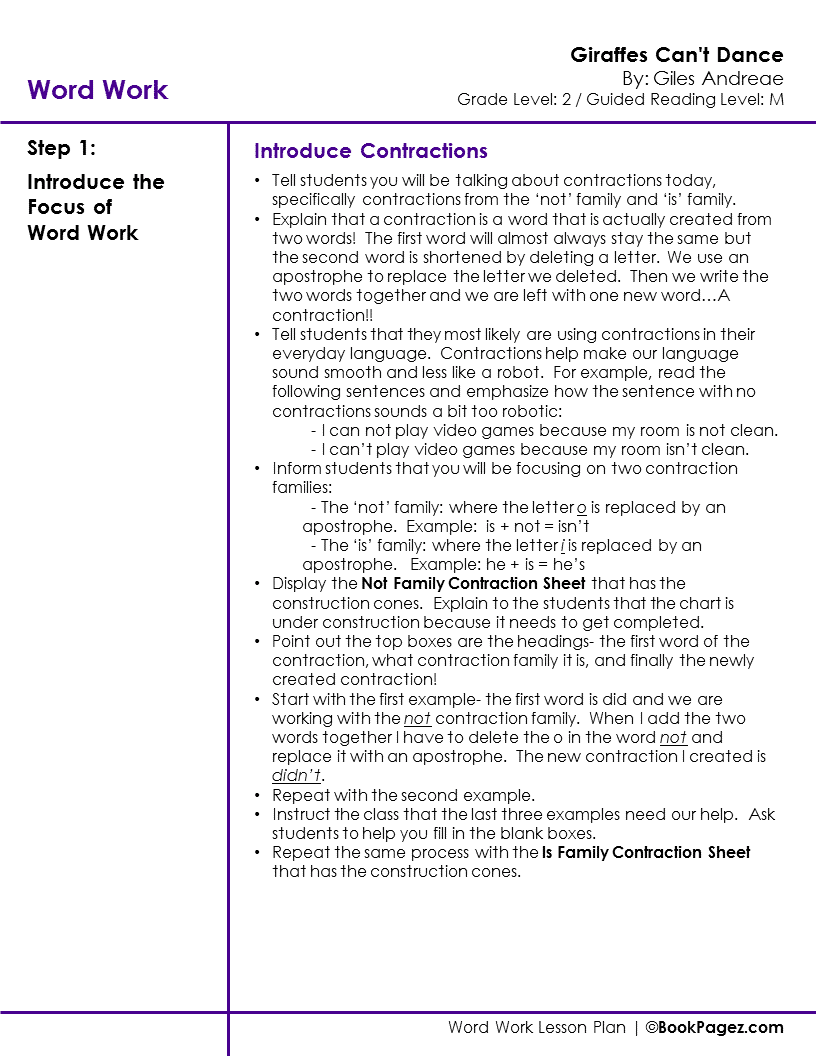
The first part of each Phonics and Word Work Lesson Plan is all about activating prior knowledge. Helping readers to make a connection between what they already know and what they’ll be learning is key for both engagement and retention.
Here’s how you can use the first part of the lesson plan to help students prepare for deeper engagement with words:
Here’s how you can use the first part of the lesson plan to help students prepare for deeper engagement with words:
- Introduce instructional focus by having a conversation about words
- Write examples of your instructional focus on the board or create an anchor chart
- Invite students to brainstorm words that match the lessons' focus
Part 2: Connecting the Instructional Focus to the Text (5 minutes)
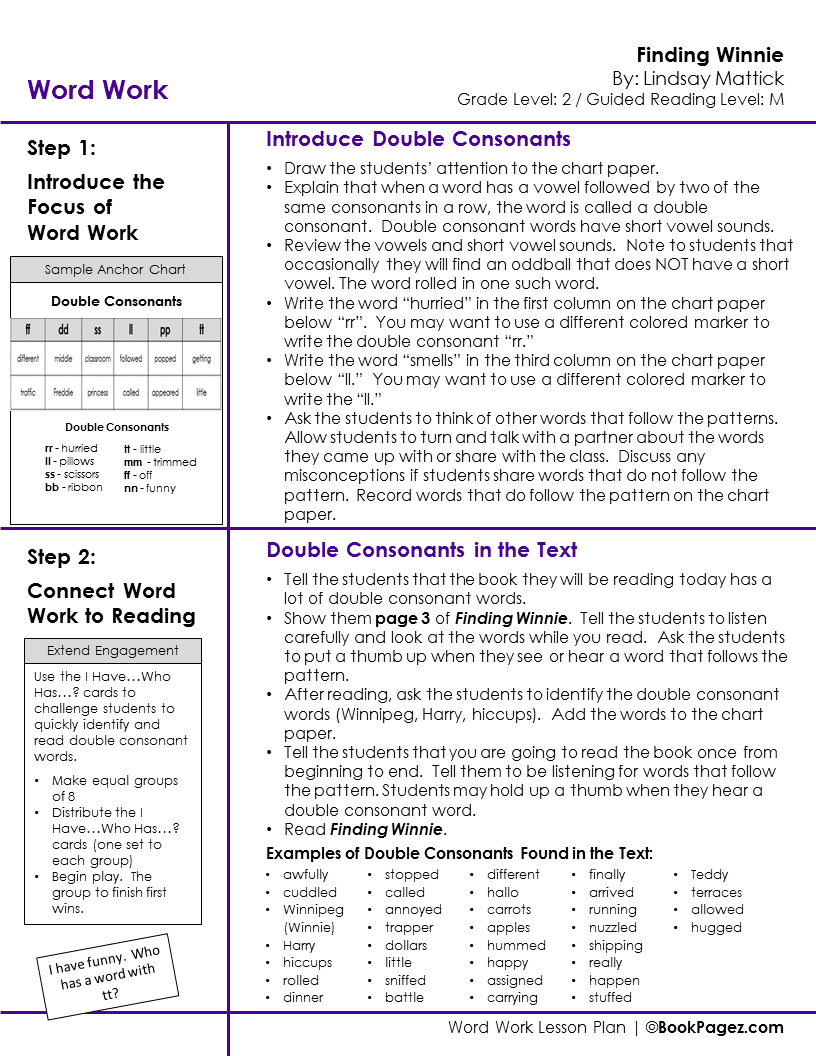
The second part of the lesson plan takes word study out of isolation and anchors it within the pages of a familiar book.
Each lesson plan is different, but the goals of this section are always the same:
Each lesson plan is different, but the goals of this section are always the same:
- Students should actively listen to a text, signaling when they hear or see a word that matches the focus of the lesson
- You can assess student understanding based on their ability to identify words during the read aloud
Part 3: Guided Practice (10 minutes)
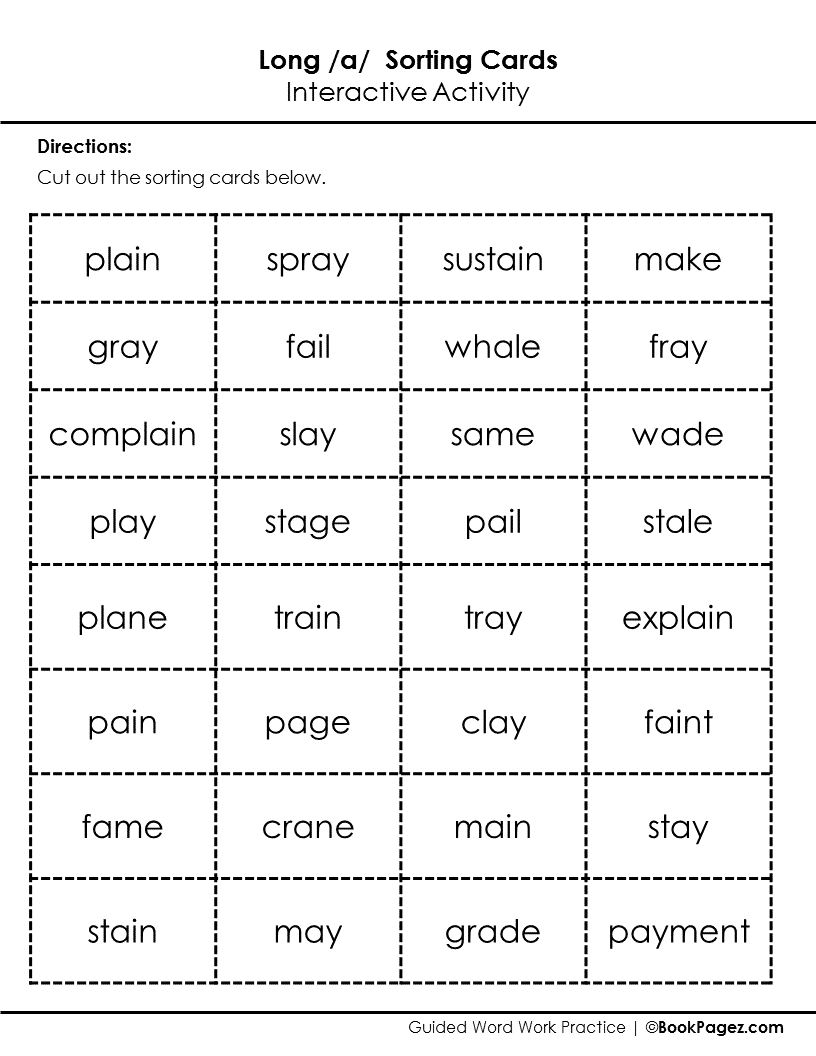
The third part of the Phonics and Word Work Lesson Plan provides students with an opportunity to manipulate words, explore how they work, and discover connections between them.
Each lesson plan includes different types of activities, but the goals of this section are always the same:
Each lesson plan includes different types of activities, but the goals of this section are always the same:
- Students actively examine words using a hands-on approach
- Students’ specific knowledge of an alphabetic, pattern, or meaning system deepen as a result of interacting with words and with other students
- Students are able to communicate what they know and what they are wondering about the word study to deepen understanding
Part 4: Independent Practice (10 minutes)
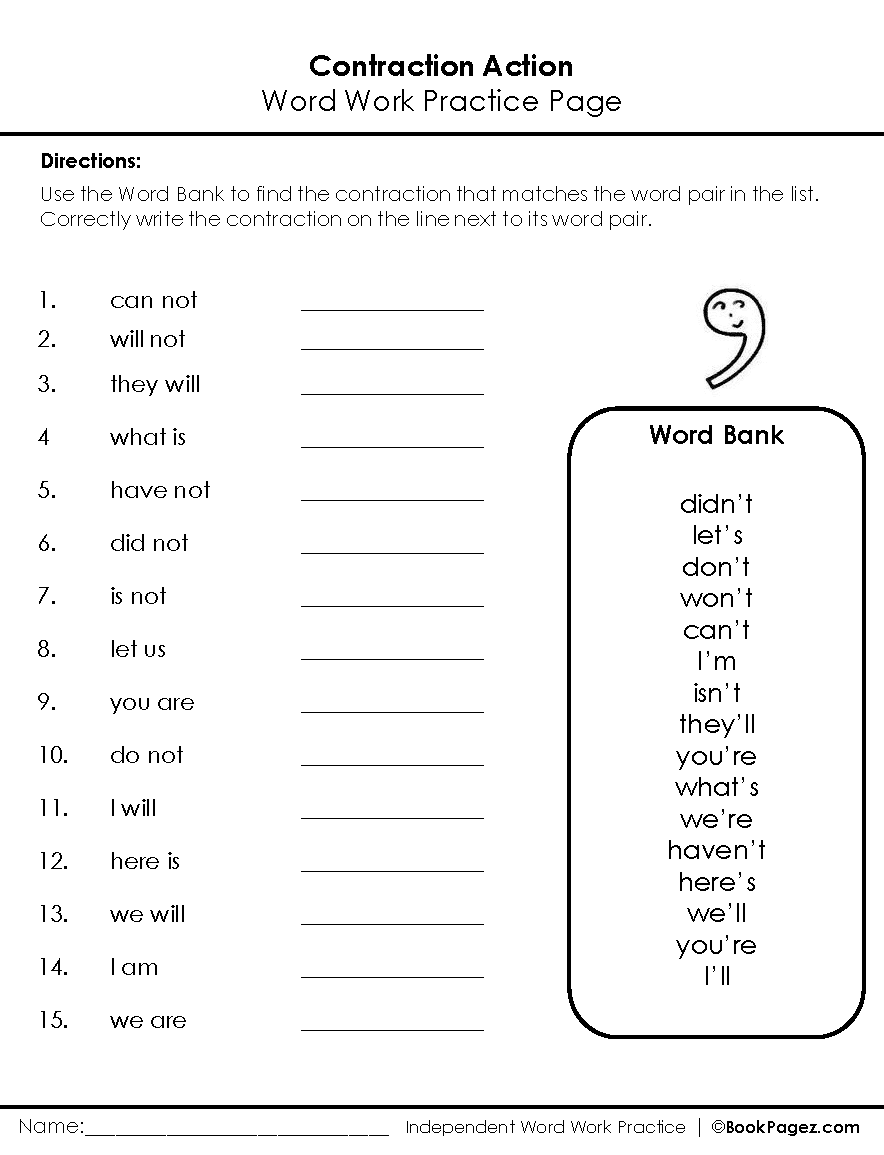
The fourth part of the lesson plan provides students with the opportunity to show what they’ve learned about words.
Through presenting students with an independent activity designed to extend their work with specific words, you allow the student to engage with words at their own pace. This is a perfect time for you to assess student understanding and confer with any students who may be struggling.
Through presenting students with an independent activity designed to extend their work with specific words, you allow the student to engage with words at their own pace. This is a perfect time for you to assess student understanding and confer with any students who may be struggling.
Part 5: Reflection (2-5 minutes)
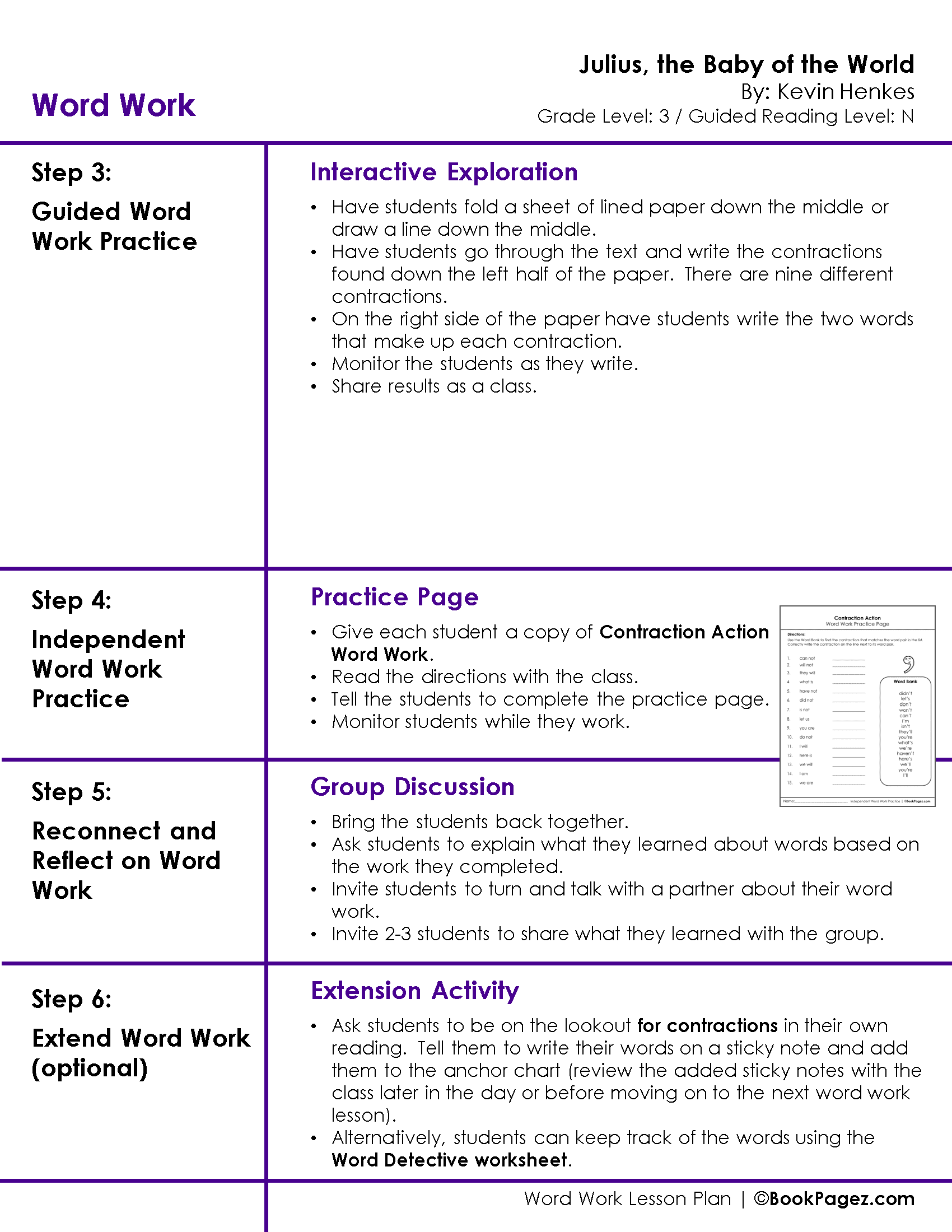
The fifth part of the lesson gives students the opportunity to share what they’ve learned with other students. By taking the time to reflect on the lesson and discuss their findings, students can begin to internalize what they learned.
Part 6: Extension Activity (optional and ongoing)
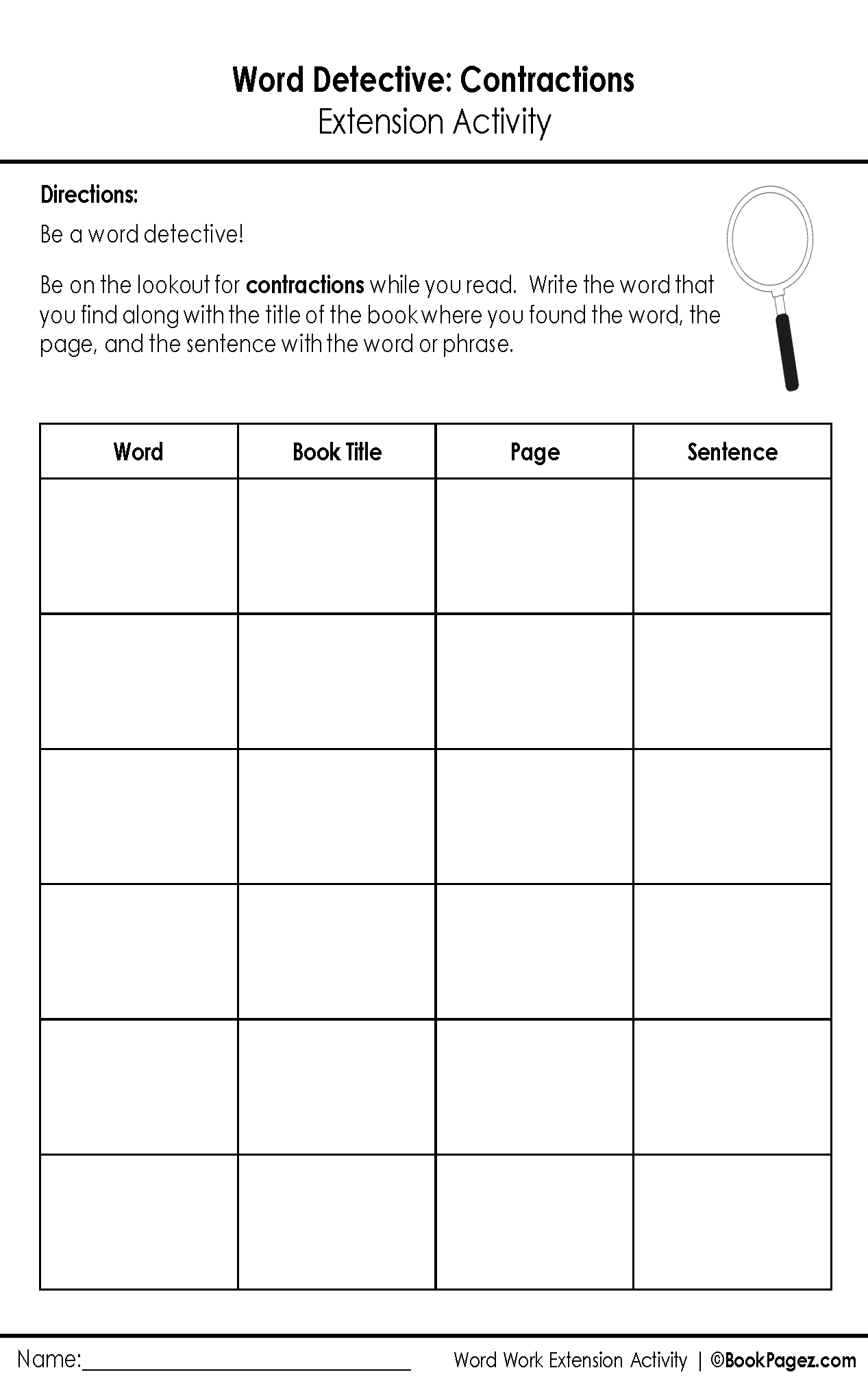
The final part of the Phonics and Word Work Lesson Plan is optional.
This part is intended to extend student exploration of words beyond the time dedicated to the lesson. By providing readers with a way to keep track of words as they encounter them across their reading, you encourage students to actively engage with text throughout the day.
This part is intended to extend student exploration of words beyond the time dedicated to the lesson. By providing readers with a way to keep track of words as they encounter them across their reading, you encourage students to actively engage with text throughout the day.
A Note About Standards Alignment
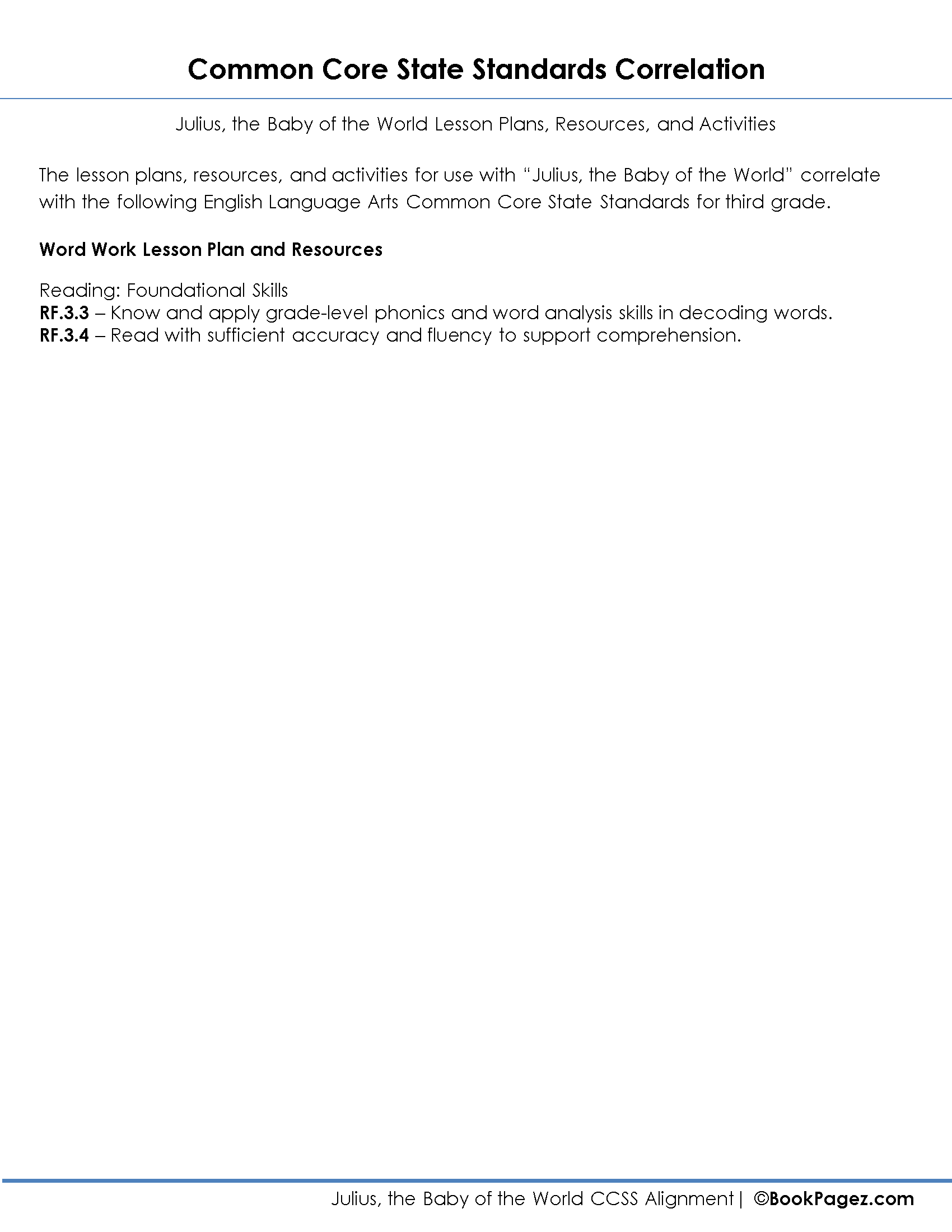
All of the Comprehension Strategy Lesson Plans include Common Core State Standard alignment. The standards listed with each lesson plan are based on the Guided Reading Level of the book pairing.
So, for example, if the book has been identified as a Guided Reading level L, the book is most appropriate for students reading at a second grade level. Therefore, we have aligned the lesson plan and included resources to the Common Core State Standards for second grade.
So, for example, if the book has been identified as a Guided Reading level L, the book is most appropriate for students reading at a second grade level. Therefore, we have aligned the lesson plan and included resources to the Common Core State Standards for second grade.


